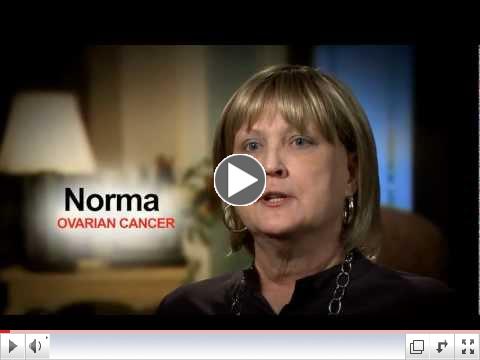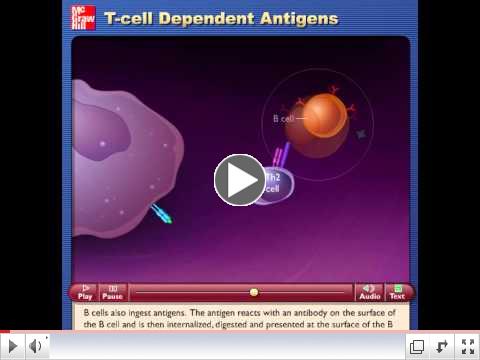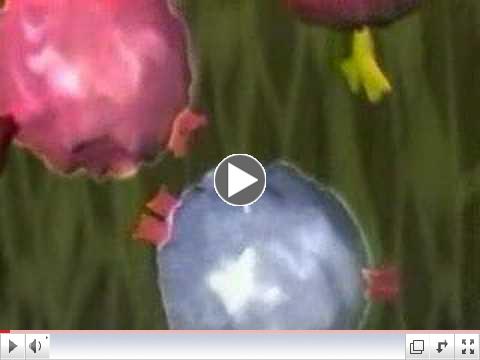|
NEWLY DIAGNOSED
| |
If you have recently been diagnosed with CLL, you probably have questions.
Information about CLL
What we are doing to defeat CLL
|
|
MOON SHOTS
|
|
VIDEOS
 | |
Watch the September 21st Moon Shots announcement
|
 | |
Beyond the boundaries: The Moon Shots to cure cancer
|
 | | CNN's Dr. Sanjay Gupta interviews the president of MD Anderson, Dr. Ronald DePinho |
|
EXTRA! EXTRA!
|

The latest issue of the CLL Research Momentum is in the final stages of preparation. Send us your mailing address if you currently do not receive hard copies and would like to be added to the mailing list.
info@cllglobal.org
|
|
BE SOCIAL
| |
__________________

Join our Cause
__________________

|
|
QUESTIONS/COMMENTS?
| |
Is there something specific you want to read and learn about?
Let us know if you have any comments or suggestions for improvement.
You are the reason CLL Global exists, and we want to hear from you.
info@cllglobal.org
|
|
IMMUNE SYSTEM
|
PREVIOUS TIDBITS
ARTICLES ON THE IMMUNE SYSTEM
_________________ Click on the image to learn more about the immune system.
Provided by the National Institutes of Health________________ Do you have questions about the immune system? Email us, and we will provide answers to your questions as the series continues. |
|
INNATE IMMUNE CELLS
|
Phagocytes are a type of innate immune cell that finds and eats antigens and presents antigens to T-cells. The main types are:
 Granulocytes
 Macrophages  Dendtritic cells ____________
COMPLIMENT SYSTEM:
(Not discussed in text) free floating proteins that alarm immune cells of invasion.

|
|
IMMUNE CELL VIDEOS
| |
Watch the videos to see how immune cells interact with one another.
 | | Antigen Presentation |
 | | Antibody Mediated Immune Response |
|
|
DONATE NOW!! | |

|
|
|
|
Greetings!
You have probably already heard about the "Moon Shots" Program announcement from MD Anderson Cancer Center. Below Dr. Keating provides commentary and details of the CLL Moon Shot. Also included in this issue is a progress report update all the way from Italy and the third article in our series on the immune system. Read on!
|
|
PRESIDENT'S CORNER: opinions & reports from Dr. Keating
|
CLL Program Selected as a Moon Shot
 | |
Dr. Michael Keating, president and CEO
|
The CLL program at MD Anderson Cancer Center was recently named one of six "Moon Shots" as part of a new approach MD Anderson is taking to defeat cancer. A news conference was held on September 21, 2012 announcing that the institution is launching a $3 billion initiative to reduce cancer deaths over the next decade. Moon Shot proposals were presented on specific types of cancer to a review committee over the summer. Six high-impact projects were were selected for initial funding: acute myeloid leukemia/myelodysplastic syndrome, breast/ovarian, chronic lymphocytic leukemia, lung, melanoma and prostate. Fifteen of my closest colleagues at MD Anderson and I spent the summer developing the successful CLL Moon Shot proposal. Each of the investigators is also a member of the CLL Global Alliance. We have been working together for several years. In my opinion, this gives us a jump-start on the collaborative approach emphasized by the Moon Shots Program. The CLL Moon Shot is going to be a multifaceted undertaking. Our short-term goal is to apply breakthrough treatments based on specific targets without damaging DNA or the immune system. We hope to replace standard chemotherapy regimens for all CLL patients at MD Anderson within one year. The long-term aim is a cure for all CLL patients. Just as important, we must reduce the rate of secondary cancers. We do not want to cure one disease if it will lead to the occurrence of another. While the announcement was made in September, the Moon Shots Program will not officially begin until 2013. You can rely on CLL Global to provide details as they unfold. In the meantime, you can read more about our intended course of action by clicking on the link below.  
|
|
|
RESEARCH NEWS
| |
Project Update: Dissecting Molecular Targets
CLL cells are able to persist partly because of interactions with other cells and molecules in their tissue environments (called microenvironments). Members of the CLL-Stromal Interactions group within the CLL Global Alliance are dedicated to studying these microenvironments and have been churning out new information. Dr. Federico Caligaris-Cappio (Scientific Institute
 | |
Professor Federico Caligaris-Cappio (Scientific Institute Hospital San Raffaele, Italy)
|
Hospital San Raffaele, Italy) recently submitted his final report for his Alliance project which details valuable information and collaborations.
In some patients, CLL cells lose the need for microenvironmental signals. Dr. Caligaris-Cappio observed that these patients have a shorter time to disease progression than patients whose CLL cell growth is dependent upon these signals. Dr. Caligaris-Cappio has characterized the role of one of these signals, the toll-like-receptor (TLR), in the development and/or progression of CLL.
TLR are located on the surface of immune cells, including CLL cells, and are key players in the body's defense from infection. They recognize certain types of foreign antigens, and upon interaction with these antigens, trigger cell activation and inflammation. Dr. Caligaris-Cappio has discovered that different subgroups of CLL cases use distinct TLR signaling molecules which may impact the diverse behavior of CLL cells.
 |
This cartoon illustrates the role of toll-like-receptors on the surface of cells. The receptors help to alert the body of intruders. Image courtesy of
|
To confirm this differential signaling, Dr. Caligaris-Cappio's group generated a new mouse model to test the TLR, proving that unabated TLR stimulation leads to earlier occurrence of a more wide-spread disease. The group has also generated a mouse model of aggressive human CLL that is currently used to test novel drugs and immunotherapy approaches.
Dr. Caligaris-Cappio and colleagues are also studying a molecule called HS1 which is part of the B-cell receptor pathway. The B-cell receptor is an important factor of CLL cell survival and proliferation, and the B-cell receptor pathway has become prominent target. Dr. Caligaris-Cappio's group discovered that when HS1 is activated, CLL cells migrate to the tissue microenvironments, especially the bone marrow. When they silenced HS1 in the CLL cells in the laboratory, there was a noticeable decrease of migration to the tissues.
Targeting the pathway in which HS1 is involved should force CLL cells from the tissue into the blood where they are more vulnerable. A kinase inhibitor called dasatinib, which targets this pathway, is being tested in clinical trials for CLL. Dasatinib also targets other pathways and is already approved for the treatment of chronic myelogenous leukemia (CML) via these other pathways. It has been somewhat effective in CLL clinical trials, but studies suggest it will be more effective in combination with other treatments or in particular CLL patient subgroups.
Although Dr. Caligaris-Cappio's Alliance grant has finished, the work has not. The CLL-Stromal Interactions group is currently developing a project aimed at bringing the expertise acquired over the last few years to clinical fruition. Importantly, Dr. Caligaris-Cappio reported that, "The ideas developed as a result of my participation in the Alliance have raised great interest within my own Institution. Increasing the critical mass devoted to CLL will further improve the possibility of fostering new ideas and creating new collaborations."
|
CLL EDUCATION
| |
Immune System 101: Immune Cells
We have been presenting a series on the immune system so that readers have a better understanding of how CLL affects the body. This month's article focuses on the immune cells. As discussed in prior articles of this series, immune cells primarily provide either innate immunity (first responders, non-specific) or adaptive immunity (target-specific, develops with time). All immune cells work together as a team.
INNATE IMMUNE CELLS
Cells that are primarily part of the innate immune system can be likened to the 1980s videogame Pac-Man. Of course it is
more complicated than this, but Pac-Man provides a visual of the non-specific nature of the cells. The innate immune cells travel around the body destroying anything in their path that should not be there.
The innate immune system has several lines of defense. Some of the immune cells act as a protective barrier for your body. Innate immune cells also identify and remove foreign substances, either on their own or by recruiting other immune cells. Some cells swallow antigens, and some target antigens with chemicals that destroy the cell. When things get serious, innate immune cells call in the adaptive immune cells by sending chemical signals or through a process called antigen presentation (Watch the Antigen Presentation video in the side bar to learn more).
ADAPTIVE IMMUNE CELLS
There are two types of cells primarily involved in adaptive immunity: B-cells and T-cells. Both are white blood cells, or lymphocytes, and can be referred to as B-lymphocytes and T-lymphocytes. B-cells and T-cells are key components of adaptive immunity. (As a reminder, CLL is a disease of the B-cells. T-cells do not function normally as the disease progresses.) There are several sub-types of both cells. Unlike innate immune cells which recognize common antigens from birth, adaptive immune cells develop and mature, or adapt, with each antigen encounter. Therefore the cells become more precise over time.
T-CELLS
Some T-cells are responsible for killing; some instigate other cells to fulfill an immune response. T-cells can be stimulated through antigen presentation or they can recognize antigens on the surface of cells and destroy the cell to reduce the spread of infection. Once a T-cell has taken on an infection, it can become a memory cell that always knows how to respond when the infection recurs.
B-CELLS
The primary role of B-cells is to produce antibodies. Once a B-cell encounters an antigen, it produces an antibody with the same "signature" and then matures and divides into multiple plasma cells with the help of T-cells (watch the Antibody Mediated Immune Response video in the side bar to learn more). These plasma cells produce antigen-specific antibodies which then float freely through the body. When an antibody finds a matching antigen it attaches to the antigen, marking it for destruction. The plasma cells are stimulated to divide and produce more antibodies when an infection recurs.
 |
T-cell (TC, green) and B-cell (BC, yellow) communicating. Image provided by
.
|
The immune system is a complex network of cells working together to keep us healthy. Next month, we will begin to look at the development of B-cells into CLL cells. In subsequent articles we will address what is going on in a CLL patient's body, how this affects patients and what researchers are doing to intervene.
|
|
THANK YOU FOR SUPPORTING US!
| | |
Stay tuned for more information on the CLL Moon Shot, upcoming scientific meetings and the season of giving.
Sincerely,
CLL Global Research Foundation
|
|
|